Das Rauhe Haus, Hamburg, Germany
In 1833, Johann Hinrich Wichern, a German theologian, established what became known as Das Rauhe Haus (the Rough House) in Horn, now a suburb of the Hamburg. After working as a Sunday School teacher in the poverty-ridden Protestant parish of St George, which lay at the gates of Hamburg, Wichern decided that he needed to do something 'to save neglected and difficult to educate children'. In October 1833, Wichern, together with his wife and mother, moved into a cottage that had been donated for the purpose. The cottage had previously been known as 'Ruge's house', Ruge being a former occupier of the property, but became corrupted into the Rauhe Haus (Rough House). The original cottage is shown below.
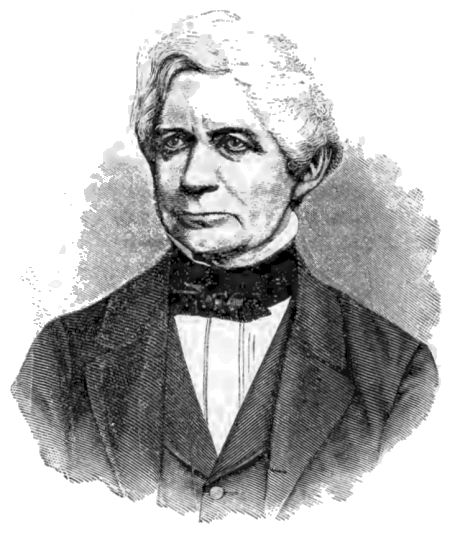
Johann Hinrich Wichern (1808-1881)
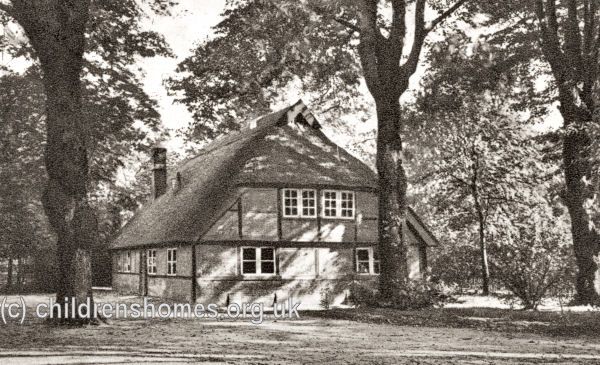
The original cottage at Das Rauhe Haus, Hamburg. © Peter Higginbotham
By the end of 1833, Wichern and his supporters had raise enough money to allow twelve boys to be taken into the household. Additional buildings were subsequently erected at the site to allow an increasing number to be accommodated.
A guiding principle of the Rauhe Haus was that children lived in family-like households, each with ten to twelve children and a caregiver, who was called 'brother'. In 1839, an 'assistants' institute' was established where the brothers, who were poor and elementary school teachers and social workers, were trained by Wichern. His first colleague, Amanda Böhme, became his wife in 1835.
As well as housing, other buildings added to the site included a farm, prayer-hall, a spinning mill and workshops for tailoring, shoemaking and carpentry.

Der Betsaal (Prayer Hall, erected 1839), Das Rauhe Haus, Hamburg.
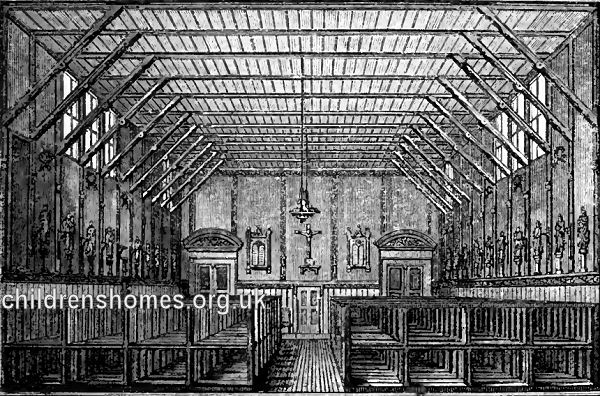
Der Betsaal (Prayer Hall interior), Das Rauhe Haus, Hamburg.

Das Schweizerhaus (Swiss House, erected 1834, later used as bookbindery), Das Rauhe Haus, Hamburg.

Die Grüne Lanne, ('The Green Lane', 1835), Das Rauhe Haus, Hamburg.
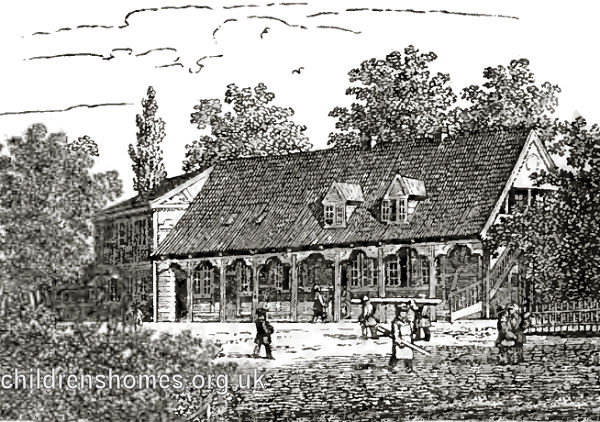
Der Alte Goldne Boden' ('The Old Golden Ground', erected 1836), Das Rauhe Haus, Hamburg.
In 1842, a printing and book-binding department was established for the production of leaflets and pamphlets to disseminate the religious views of Wichern and his colleagues, who adopted the name the Inner Mission. Despite Wichern's increasing involvement in his mission work, he remained as manager of the Rauhe Haus until his son, Johannes, took over the role in 1872.
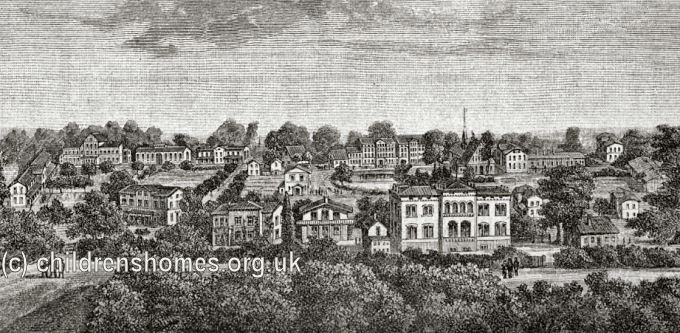
View of Das Rauhe Haus, Hamburg, from the south, 1880s.
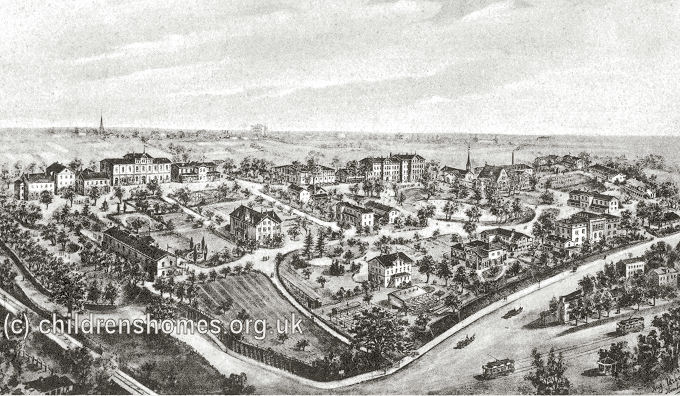
View of Das Rauhe Haus, Hamburg from the south-west, early 1900s. © Peter Higginbotham
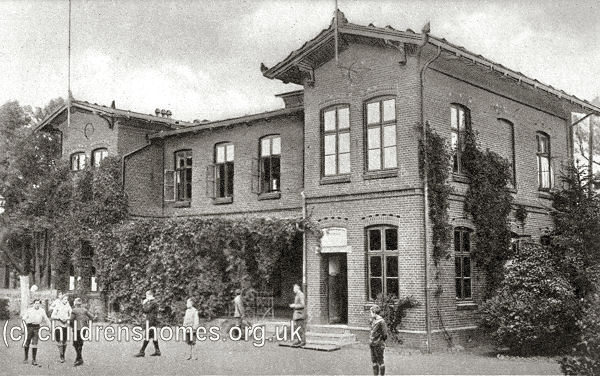
A children's house at Das Rauhe Haus, Hamburg. © Peter Higginbotham
Ten family-style households were eventually set up — 120 children in all. In the summer, the daily hours of work amounted to nine-and-a-half hours and in winter to six-and-a-half hours. In addition, there were daily lessons for two or three hours. Each family had a weekly meeting where any problems, disputes, and suggestions were discussed. Any misdemeanours were examined as well as the work performance of each child.
As well as a trade, such as tailoring or printing, the boys were all taught gardening and agriculture. Half of the boys were always at work, while the others were at school. The land of the Rauhe Haus was cultivated entirely by spade labour. At busy seasons for the field, other occupations were put aside, and the entire population of a hundred and fifty, men and boys turned out to work. When a boy left the institution, he was apprenticed in Hamburg to the trade he had studied.
By 1835, a group of girls was being accommodated at the establishment. The girls subsequently had their own house ('The Swallows') and were supervised by a group of deaconesses. The girls and boys only came into contact in the chapel and classroom. The girls were occupied in house-cleaning and kitchen work and were taught sewing and knitting, most of them entering domestic service on leaving the Rauhe Haus.
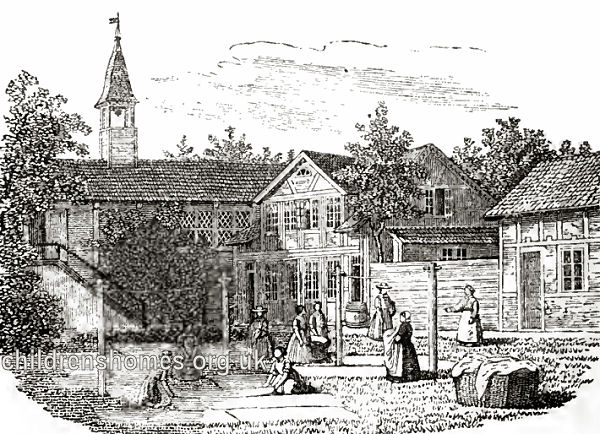
Die Schwalbennester ('The Swallows' — a girls' house — erected 1843), Das Rauhe Haus, Hamburg.
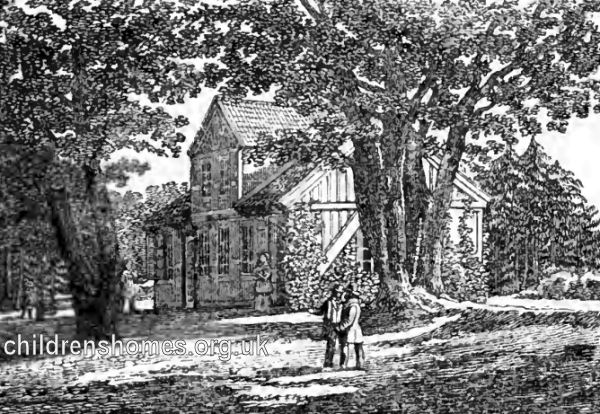
Die Alte Fischerhütte ('The Old Fishing Hut', erected 1845), Das Rauhe Haus, Hamburg.

Das Stallegebäde ('The Barn', erected 1845), Das Rauhe Haus, Hamburg.

Dr Wicherns Haus ('Dr Wichern's House', erected 1851), Das Rauhe Haus, Hamburg.
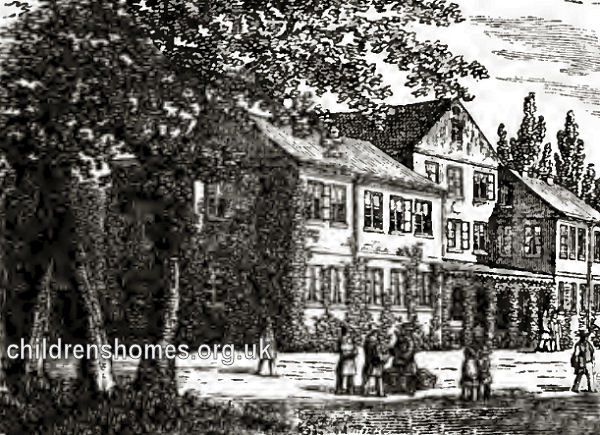
Der Weinberg ('The Vineyard', erected 1851), Das Rauhe Haus, Hamburg.
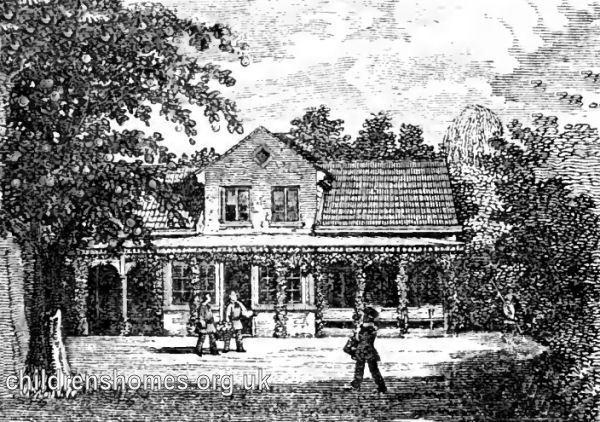
Die Schönburg (erected 1854), Das Rauhe Haus, Hamburg.
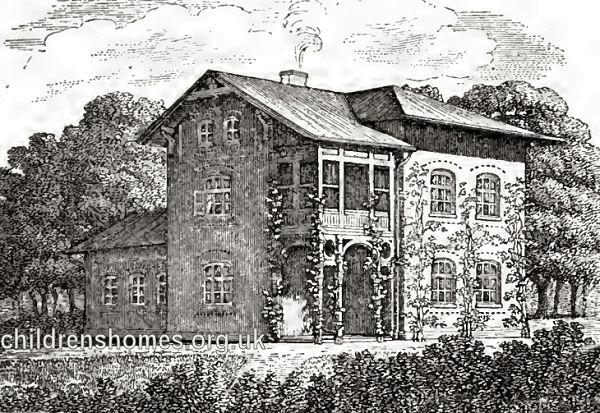
Die Buchhandlung ('The Bookshop (Agency)'), Das Rauhe Haus, Hamburg.

Das Schulhaus ('The School-house', erected 1873), Das Rauhe Haus, Hamburg.
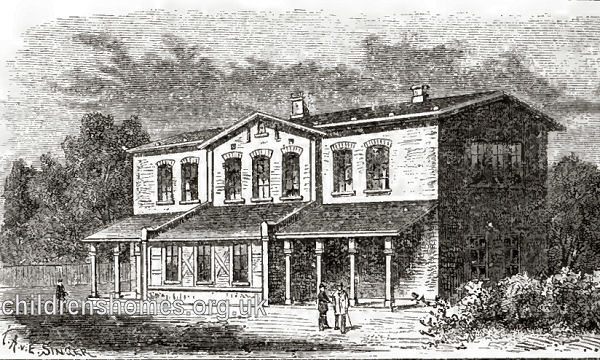
Der Bienenkorb ('The Beehive', erected 1864, renovated 1877), Das Rauhe Haus, Hamburg.

Die Neue Fischerhütte ('The New Fishing Hut', erected 1877), Das Rauhe Haus, Hamburg.

Die Krankenbarracke ('Sick Barrack', erected 1881), Das Rauhe Haus, Hamburg.
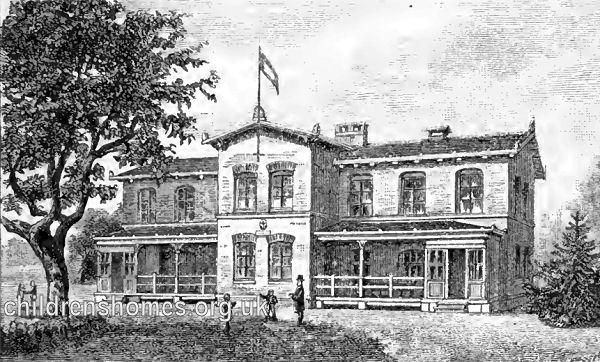
Der Anker ('The Anchor', erected 1881), Das Rauhe Haus, Hamburg.
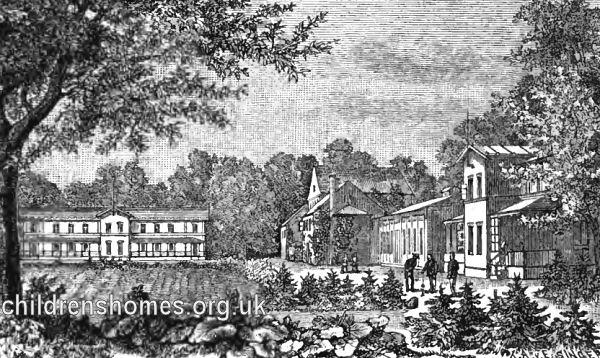
Köcher ('Cooker', 1881), Weinberg ('Vineyard', 1851), Turnhalle ('Gymnasium', 1877), Eiche ('Oak', 1878), Das Rauhe Haus, Hamburg.
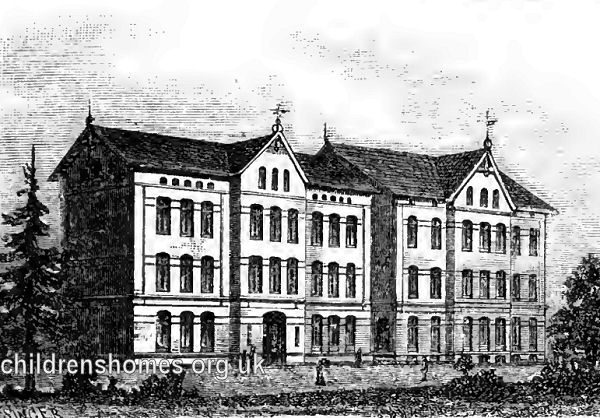
Der Neue Goldne Boden ('New Golden Ground', erected 1883), Das Rauhe Haus, Hamburg.
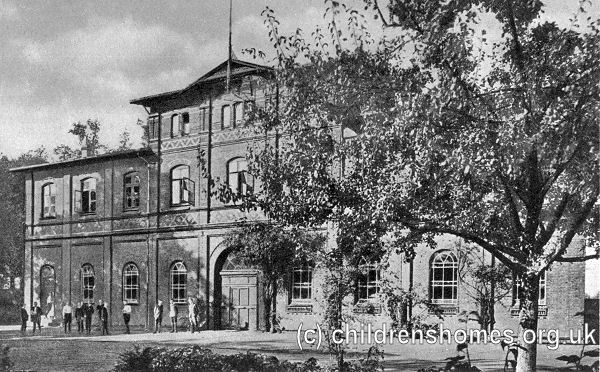
Das Rauhe Haus, Hamburg, early 1900s.
The family-style accommodation provided for the children at the Rauhe Haus was in strong contrast the large monolithic establishments in which such children were normally housed. From the 1840s onwards, the Rauhe Haus model, along with a similar approach that was adopted at the boys' reformatory at Mettray, in France, proved very influential. In Britain, it was used by institutions such as the Philanthropic Society's reformatory school at Redhill. Housing children in family-style groups was also the basis of the 'cottage homes accommodation developed by a number of British charities and poor law authorities. The Rauhe Haus is sometimes compared to the English Reformatory, but was more akin to the related institution of the Industrial School.
The charity founded by Johann Wichern is now known as Stiftung Das Rauhe Haus (Rauhe Haus Foundation) of the German Diakonisches Werk (Diaconal Work), the charitable work organization of many Protestant churches in Germany. It continues to provide shelter and training for children, the mentally handicapped and disturbed, and cares for the aged. It also trains people for social service careers.
Records
Note: many repositories impose a closure period of up to 100 years for records identifying individuals. Before travelling a long distance, always check that the records you want to consult will be available.
- None identfied at present — any information welcome.
Bibliography
- Higginbotham, Peter Children's Homes: A History of Institutional Care for Britain s Young (2017, Pen & Sword)
Links
Except where indicated, this page () © Peter Higginbotham. Contents may not be reproduced without permission.


